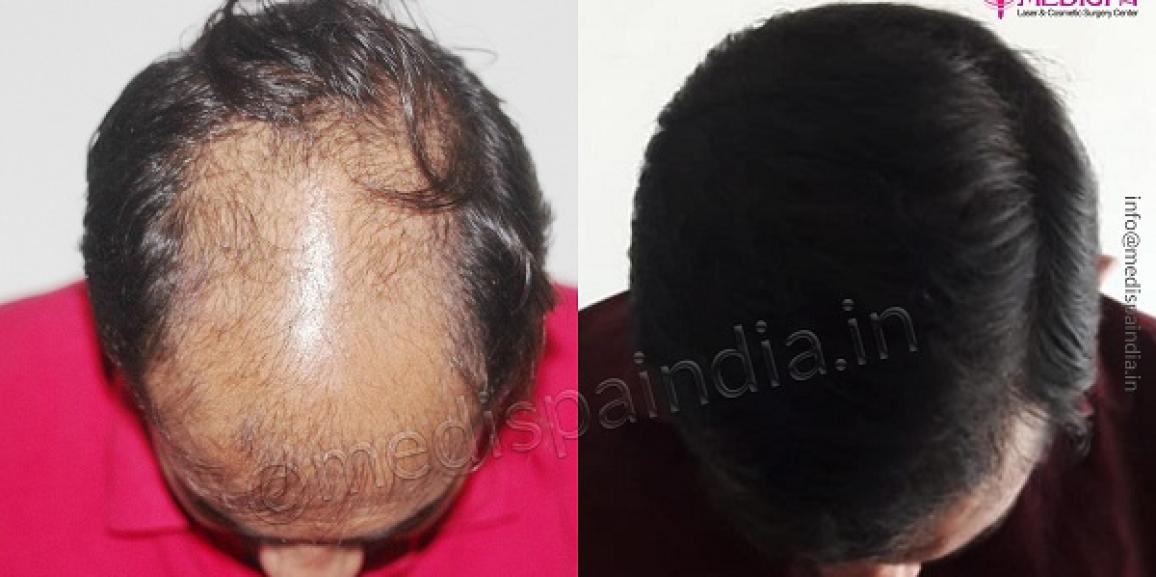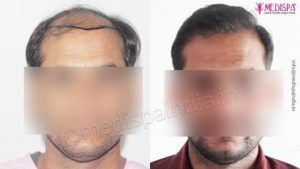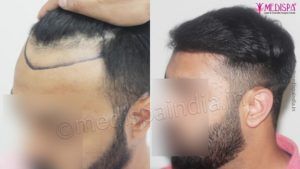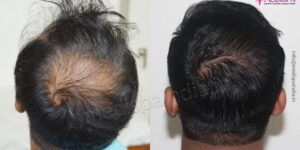
When you go for any procedure our focus should be to prepare not just about the results but also the post-operative period. Most of the clients stay unaware about the scenarios of timelines after a hair transplant.
Most of the patients believe that after the hair transplant, once the follicles are planted they begin to grow immediately after the procedure.
Which is not truly the scenario?
The normal phenomenon after hair transplant is something different. Actually after few days of the procedure mostly a week after you lose the transplanted hair and the bald area looks the same as before the procedure. Don’t worry this is completely normal so need to disappoint or panic. This phase of hair loss is completely temporary and is termed as “shock loss.”
In the further blog we dedicate on explaining about the shock loss and what to do when you face this?
Believe it, it is just a phase and it doesn’t mean that your hair transplant has failed.
What is shock loss?
Shock loss is also referred as telogen effluvium or hair shedding. It is a temporary hair loss phase after a week following hair transplant. This can be explained as a possible side effect of post-operative traumatic shock a hair has to face. The shock loss can occur at both the recipient site and the donor area wherein it is more common in the former location.
The phase is completely natural and occurs in almost all the patients undergoing hair transplant. So don’t be concerned if it happens with you too after the procedure as it is a momentary non-permanent hair loss. After this phase the hair follicles grow back once the rest phase post operatively is over.
Why does shock loss occur after the hair transplant?
The basic procedure of hair transplant is the harvesting of the hair roots from the chosen donor sites to transplanting the hair roots at the desired bald area. The commonest donor area is the back and sides of the head as this area consists of DHT resistant hair roots that do not undergo hair loss because of them devoid of receptors for androgen hormones.
The principle behind the hair transplant lies on the permanent nature of these hair roots which do not undergo hair loss once they are transplanted at the bald site. For this specific reason, the hair roots are specifically selected from this area and transplanted at the desired area.
Why does shock loss occur after the hair has been grafted at the bald area?
In general, hair follows a growth cycle which is divided into three phases:
Hair growth, transition and rest phase (telogen phase). In telogen phase, the hair falls or shed and then the cycle restart again.
When there is trauma to the hair, it directly enters the resting or telogen phase which explains the hair loss after the hair transplant. The process of hair transplant including incision, administering anesthesia, slitting, disconnecting the blood supply of the hair for some time disrupts the hair growth cycle and makes the hair enters the telogen phase.
The shock loss cannot be related to the errors a doctor could do while performing hair transplant. The errors like close harvesting of the hair roots, damaging the hair roots or improper handling of the hair roots could lead to permanent hair loss after the hair transplant.
To avoid the occurrence of such incidence, it is important to choose the best clinic for the procedure where you can find a trusted professional and excellent facilities.
For how long does the phase of telogen effluvium lasts?
The timelines of the shock loss and visible hair growth following hair transplant varies from patient to patient. Most commonly, the shock hair loss occurs after 1 to 2 weeks of the hair transplant which can extend till 10 to 12 weeks after the procedure in rare circumstances.
After the phase of shock loss of hair, the hair would show visible hair growth in 3 to 4 months after the procedure. Initially, the visible hair growth is fine or weak but the thickness of hair increases gradually. The fair amount of hair growth would be visible in around months after the procedure.
What can we do to speed up the hair growth and recovery after the hair transplant?
There is nothing in specific that can avoid the occurrence of shock loss after the procedure. But yes, there are few ways that can make the hair growth following the procedure faster.
Firstly, most of the doctors advise medications like minoxidil and finasteride after the procedure to stimulate the hair growth which has fallen out during the shock loss phase. Minoxidil is applied topically at the area where the faster hair growth is desired. On the contrary, finasteride is an orally administered medicine that is recommended only to males. These medicines are advised twice a day under medical prescription.
Secondly, it is very important to eat right after the procedure as proper nutrition helps hair to grow faster. You should prefer taking more of vitamin C, vitamin A, Zinc and iron rich food that accelerates the hair growth.
Thirdly, PRP hair therapy is an option that people choose to accelerate the hair growth after the procedure. In this therapy, your own blood is drawn, processed and PRP is injected at the desired site. This facilitate the availability of the growth factors to the naïve cells which help them in growing faster.
Why Medispa hair transplant clinic for hair transplant?
Medispa hair transplant clinic has been proving its excellence since more than a decade. We are the pioneers of this field and created over more than 10000 success stories. Our patients are thoroughly explained beforehand about the after process and are prepared for what is awaiting confidently. With us, you can expect excellent recovery and assured natural looking high density hair growth.
You can definitely visit us to know more about the hair transplant procedure and after care for the same. Visit us now for a blissful journey of hair transplant.






